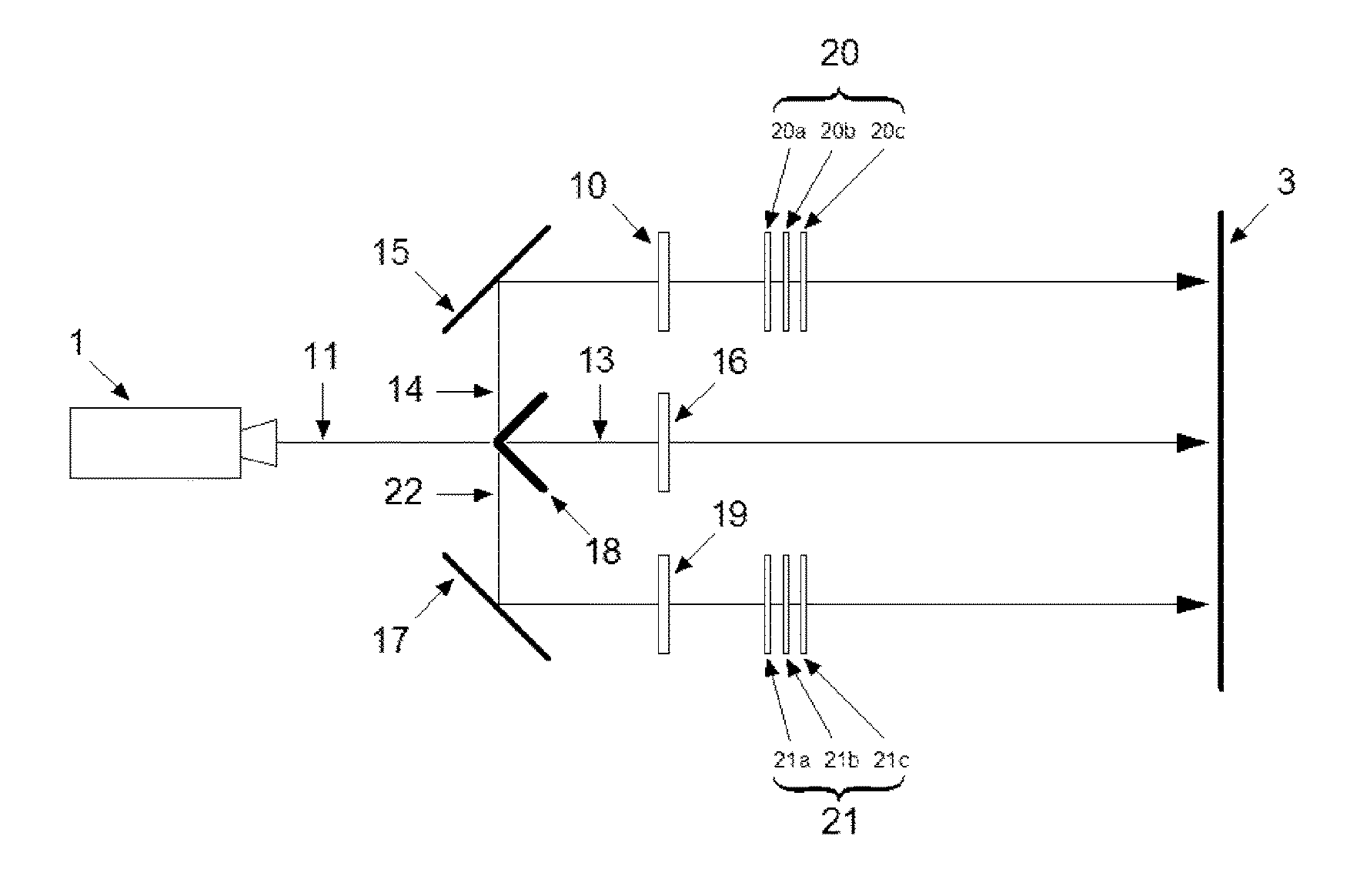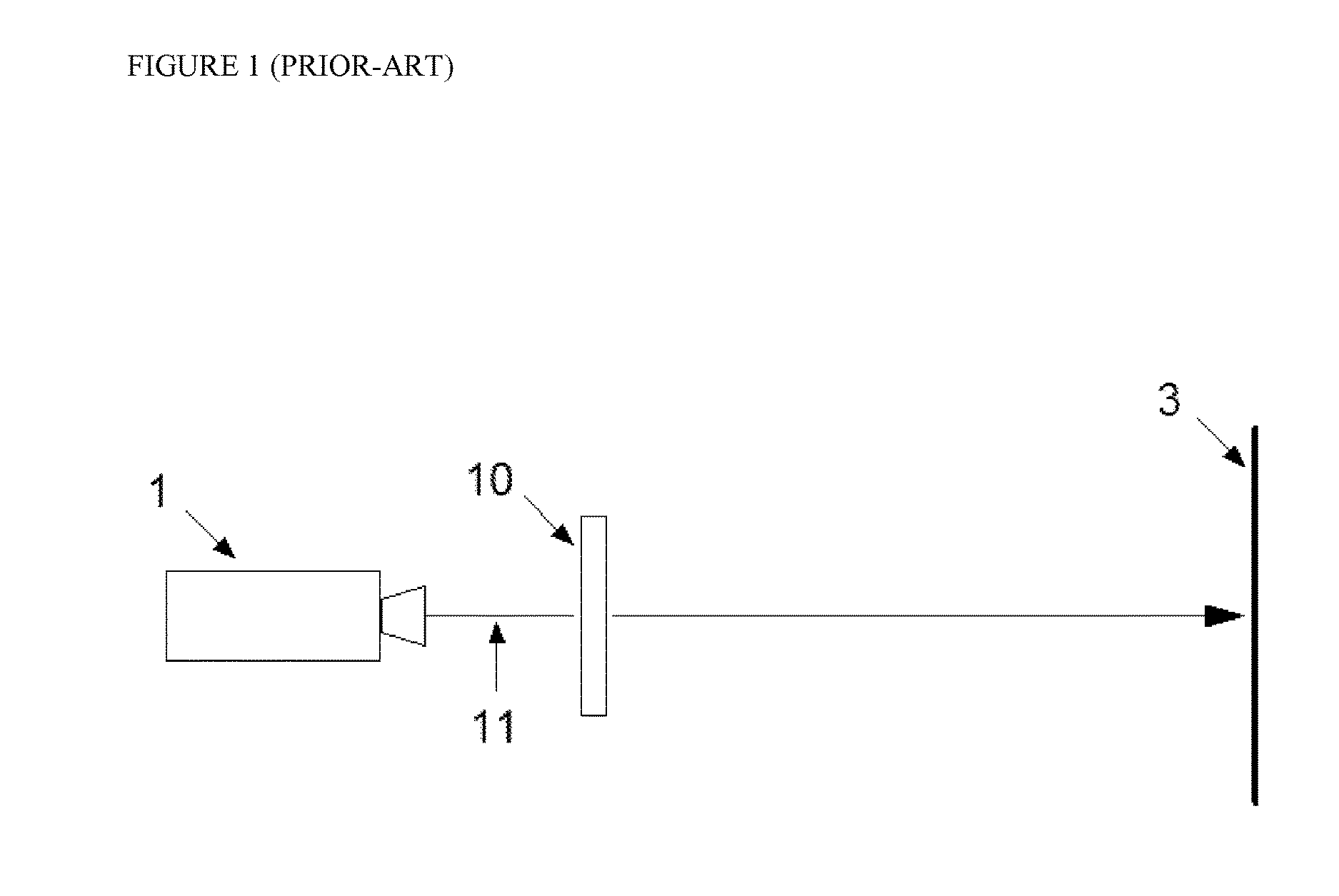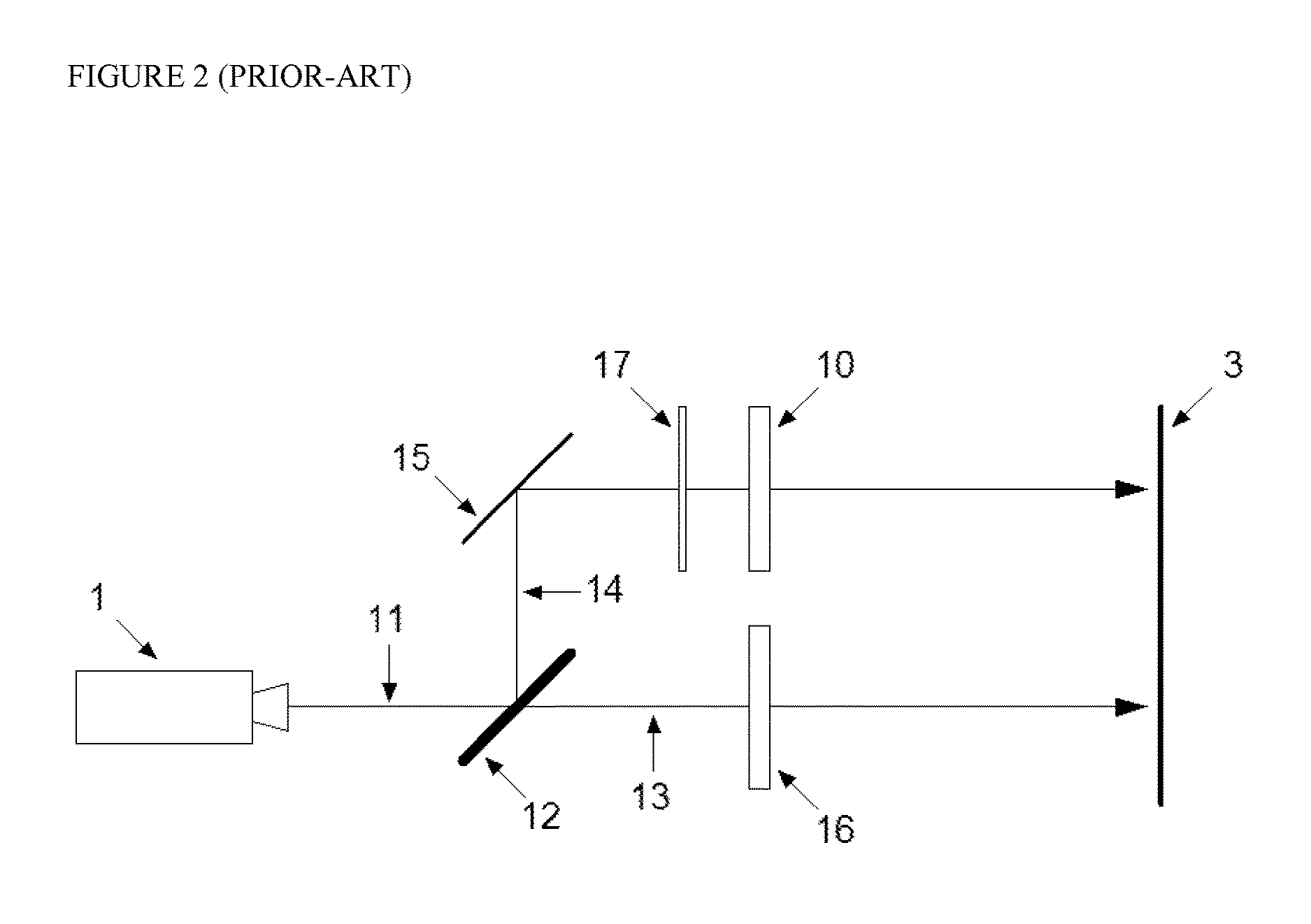Stereoscopic 3D projection system with improved level of optical light efficiency
a projection system and optical light efficiency technology, applied in the field of stereoscopic 3d projection system, can solve the problems of reducing the overall optical light efficiency of the system, generating stereoscopic 3d images that are severely lacking in on-screen image brightness, and less than approximately 90%, so as to reduce the level of ghosting or crosstalk and reduce the overall on-screen image brightness
- Summary
- Abstract
- Description
- Claims
- Application Information
AI Technical Summary
Benefits of technology
Problems solved by technology
Method used
Image
Examples
Embodiment Construction
[0050]FIG. 1 shows a single-beam stereoscopic 3d projection system according to the state of the art where a polarization modulator 10 comprising a stack of one or more liquid crystal elements (not shown) is placed directly in front of the lens of a projector 1, such as a 3-chip DLP digital cinema projector or otherwise.
[0051]In this figure and all underlying figures thereafter, the paths of image-beams are represented by single-line vectors for ease of clarity. However, it will be understood by one skilled in the art that said image-beams typically possess some level of angular divergence, for example ±10 degrees in the vertical plane and ±22 degrees in the horizontal plane, respectively. However, it is to be understood that the occurrence of said beam divergence does not depart from the inventive ideas disclosed herein and will therefore be omitted in the underlying drawings for ease of clarity.
[0052]The projector 1 generates a succession of alternate left and right-eye images 11 ...
PUM
 Login to View More
Login to View More Abstract
Description
Claims
Application Information
 Login to View More
Login to View More - R&D
- Intellectual Property
- Life Sciences
- Materials
- Tech Scout
- Unparalleled Data Quality
- Higher Quality Content
- 60% Fewer Hallucinations
Browse by: Latest US Patents, China's latest patents, Technical Efficacy Thesaurus, Application Domain, Technology Topic, Popular Technical Reports.
© 2025 PatSnap. All rights reserved.Legal|Privacy policy|Modern Slavery Act Transparency Statement|Sitemap|About US| Contact US: help@patsnap.com



